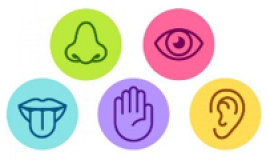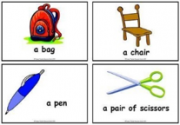Managing Perceptual Difficulties with a Neurological Condition
The information contained here is not intended to replace medical advice, and if you feel like your difficulties are obstructing your rehabilitation or impacting upon your day-to-day life, you should speak to a medical professional.
Information on this topic
Our brains process information sent to them by our senses.
When someone has a neurological condition, information from the senses may not be interpreted correctly by the brain.
This commonly occurs following damage/deterioration of either the right side of the brain or the parietal lobe region. These areas of the brain integrate the input from different senses.
Three common types of perceptual difficulties are:
- Visuo-Spatial Ability Loss: when relating visual information to the space around you is impaired e.g. making it hard to see whereabouts things are.
- Agnosia: unable to interpret information coming into our senses, and hence recognize things.
- Inattention/ Neglect: unaware of an affected are of space, or a side of the body and the space around a person on the affected side.
Sometimes perceptual difficulties can appear to be more of a memory loss/ communication problem. E.g. someone may seem slower when attempting tasks, but they are just trying to make sense of the world.
Self Quiz
If you find that you experience some of the following common perceptual difficulties, or something similar, then our self-help top-tips and activity below may help you to manage in day-to-day life.
Agnosia:
- Hear sound and not recognise what it is e.g. auditory
- Unable to recognise item by touch e.g. whether rough or smooth
- Cannot work out what an object is/ what to do with it
Visuo-Spatial Ability Loss:
- Difficult to work out where things are, bump into things, struggle to pick things up
- Unable to judge how quickly something or someone is moving
Inattention/ Neglect:
- Only perceive half of their visual field/ space around them
- Comb half of hair/ shave half of face etc.
- Eat half of food on plate
- Copy half of a picture
Top Tips
Sometimes perception will improve itself with time, other times it will not, but we have put together a few top tips to manage in day-to-day life.
All perceptual difficulties =
- Rest and Relax – Rest breaks throughout your day might help to reduce your symptoms, which will be worse when you are tired.
- Help yourself to concentrate - Focus only on what you are doing. Remove distractions wherever possible.
- External prompts e.g. colour stickers for object recognition, bright lights on the floor, musical or sound prompts, stencils.
Inattention and Neglect =
- Verbal and a physical prompt from others to actively look to the affected side. E.g. told to look for fork on left side, and unaffected hand guided towards the fork.
- Emphasise scanning to the affected side. Using group photographs where the person has to look and scan across the picture and name who/ what they can see. Also name objects along a shelf. Red tape on affected side of book/ computer that they must keep looking for.
- Try putting the persons watch on the affected wrist, so they have to look to find it
Self Help Activities
Re-arrange/ alter your living environment
Try to modify your environment to provide more support/ reduce the demands of a particular skill e.g. shifting furniture to allow more space when walking around
Some ideas of activities/ ideas to improve visual perception =
- Games such as “I Spy”, “Spot the Difference”, dot to dot worksheets, word-searches, and other card/ board games can encourage scanning of the full page/ environment.
- Games e.g. Twister can help with improving visuo-spatial abilities.
- A fun activity might be to put sticky notes numbered 1-10 along a wall in the hallway (not in order) and have the patient find them in order.
- When reading, having someone put a green dot at the start of each line, or a strip down the LH side of the page, and red dot at the end of each line (or strip down the RH side of the page) - this can help you as you can look for these colours to find the start/ end of each line.
- At meal times you could put brightly coloured tape on the affected side of the table/tray which they can look for whilst eating. Also place utensils on the neglected side to encourage visual scanning.




